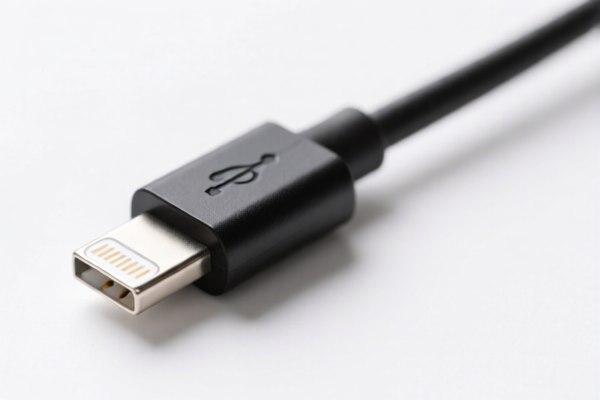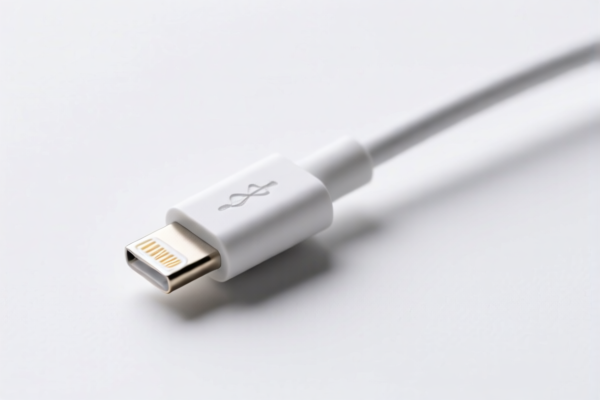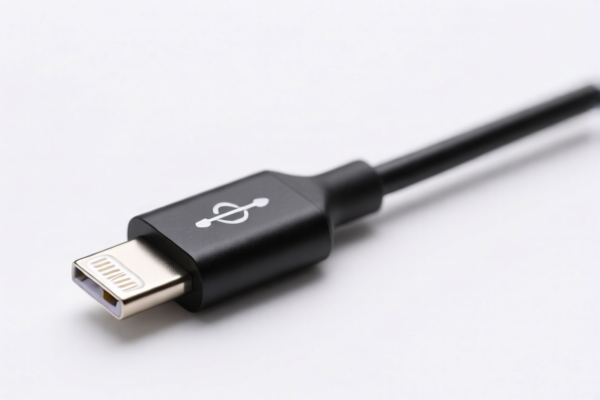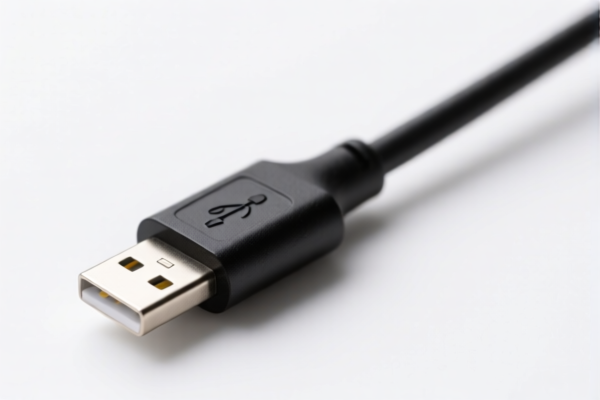| HS Code | Official Doc | Tariff Rate | Origin | Destination | Effective Date |
|---|---|---|---|---|---|
| 8544421000 | Doc | 55.0% | CN | US | 2025-05-12 |
| 8544422000 | Doc | 55.0% | CN | US | 2025-05-12 |
| 9001100030 | Doc | 61.7% | CN | US | 2025-05-12 |
| 8517790000 | Doc | 62.5% | CN | US | 2025-05-12 |
| 8537109170 | Doc | 57.7% | CN | US | 2025-05-12 |
| 8537109160 | Doc | 57.7% | CN | US | 2025-05-12 |
| 8535908020 | Doc | 57.7% | CN | US | 2025-05-12 |
| 8535908040 | Doc | 57.7% | CN | US | 2025-05-12 |
| 3926909989 | Doc | 42.8% | CN | US | 2025-05-12 |
| 3917400095 | Doc | 60.3% | CN | US | 2025-05-12 |
| 3917320050 | Doc | 58.1% | CN | US | 2025-05-12 |




Mobile Phone Charging Cables
Mobile phone charging cables, also known as data cables or USB cables, are essential accessories used to connect a mobile phone to a power source for recharging the device's battery, and often for transferring data between the phone and a computer or other compatible devices.
Material
Charging cables are typically constructed from the following materials:
- Conductors: Copper is the primary material used for the internal wires due to its excellent conductivity. Aluminum is sometimes used in lower-cost cables, but offers reduced efficiency.
- Insulation: Polyvinyl chloride (PVC) is a common material for insulating the wires, providing flexibility and protection. Thermoplastic polyurethane (TPU) is used in more durable, braided cables due to its higher abrasion resistance.
- Outer Jacket: PVC, TPU, or braided nylon are common materials for the outer jacket, offering protection and varying degrees of durability. Braided nylon cables are known for their enhanced strength and resistance to tangling.
- Connectors: Typically made of plastic with metal contacts (often gold-plated for improved conductivity and corrosion resistance).
Purpose
- Charging: The primary function is to supply power to the mobile phone’s battery, allowing it to be recharged.
- Data Transfer: Many cables support data transfer, enabling users to synchronize data (photos, videos, contacts, etc.) between the phone and a computer.
- Audio Output: Some cables, particularly those with USB-C connectors, can transmit audio signals.
Function
The cable facilitates electrical connection between the phone and a power source (wall adapter, computer USB port, power bank). Data transfer is achieved through dedicated data lines within the cable, utilizing communication protocols such as USB.
Usage Scenarios
- Home Charging: Connecting the phone to a wall adapter for overnight or regular charging.
- In-Car Charging: Using a car charger adapter to charge the phone while driving.
- Portable Power Banks: Charging the phone using a power bank when a wall outlet is unavailable.
- Data Synchronization: Connecting the phone to a computer for backing up data, transferring files, or updating software.
- Connecting to Accessories: Connecting to headphones, speakers, or other compatible devices.
Common Types
- USB-A to Micro-USB: Older standard, widely used in older Android phones and other devices. Becoming less common.
- USB-A to Lightning: Apple’s proprietary connector, used in iPhones, iPads, and AirPods.
- USB-C to USB-C: Increasingly common standard, used in newer Android phones, iPads, laptops, and other devices. Supports faster charging and data transfer speeds.
- USB-C to USB-A: Allows connecting USB-C devices to USB-A ports.
- USB-C to Lightning: Allows connecting iPhones to USB-C power sources and devices.
- Braided Cables: Offer increased durability and resistance to tangling, available in various connector combinations.
- Retractable Cables: Feature a spring-loaded mechanism for automatic retraction, providing convenience and portability.
Considerations
- Charging Speed: Cables with higher gauge wires and support for Power Delivery (PD) or Quick Charge (QC) protocols can deliver faster charging speeds.
- Data Transfer Speed: USB 3.0 and USB 3.1 cables offer faster data transfer speeds compared to USB 2.0 cables.
- Cable Length: Longer cables offer greater flexibility but may experience some power loss over longer distances.
- Durability: Braided cables and reinforced connectors offer increased durability and resistance to damage.
- Compatibility: Ensure the cable is compatible with the phone and power source.
Based on the provided information, “cable for mobile phone charging” can be classified under the following HS codes:
-
8544421000: Insulated (including enameled or anodized) wire, cable (including coaxial cable) and other insulated electric conductors, whether or not fitted with connectors; optical fiber cables, made up of individually sheathed fibers, whether or not assembled with electric conductors or fitted with connectors: Other electric conductors, for a voltage not exceeding 1,000 V: Fitted with connectors: Fitted with modular telephone connectors.
- Chapter 85: Electrical machinery and equipment and parts thereof; specifically, this chapter covers electrical conductors.
- Heading 8544: Insulated conductors, cables, and other electric conductors.
- Subheading 854442: Other electric conductors for a voltage not exceeding 1,000 V, fitted with connectors.
- Further Specification 85444210: Specifically, those fitted with modular telephone connectors. This could apply if the charging cable uses a telephone-style connector.
- Tax Rate: Base tariff: 0.0%, Additional tariff: 25.0%, Post-April 2, 2025, additional tariff: 30.0%, Total tariff: 55.0%.
-
8544422000: Insulated (including enameled or anodized) wire, cable (including coaxial cable) and other insulated electric conductors, whether or not fitted with connectors; optical fiber cables, made up of individually sheathed fibers, whether or not assembled with electric conductors or fitted with connectors: Other electric conductors, for a voltage not exceeding 1,000 V: Fitted with connectors: Other: Of a kind used for telecommunications.
- Chapter 85: Electrical machinery and equipment and parts thereof.
- Heading 8544: Insulated conductors, cables, and other electric conductors.
- Subheading 854442: Other electric conductors for a voltage not exceeding 1,000 V, fitted with connectors.
- Further Specification 85444220: Specifically, those of a kind used for telecommunications. This is a likely classification for charging cables as mobile phones are telecommunications devices.
- Tax Rate: Base tariff: 0.0%, Additional tariff: 25.0%, Post-April 2, 2025, additional tariff: 30.0%, Total tariff: 55.0%.
-
3926909989: Other articles of plastics and articles of other materials of headings 3901 to 3914: Other: Other.
- Chapter 39: Plastics and articles thereof.
- Heading 3926: Other articles of plastics.
- Subheading 392690: Other.
- Further Specification 3926909989: Specifically, other articles of plastics. This could apply to the plastic casing or insulation of the cable.
- Tax Rate: Base tariff: 5.3%, Additional tariff: 7.5%, Post-April 2, 2025, additional tariff: 30.0%, Total tariff: 42.8%.
Please note that the final classification depends on the specific materials and construction of the cable. If the cable is primarily composed of plastic, HS code 3926909989 may be applicable. However, if it is primarily an electrical conductor with connectors, HS codes 8544421000 or 8544422000 are more likely to be appropriate.
Customer Reviews
No reviews yet.